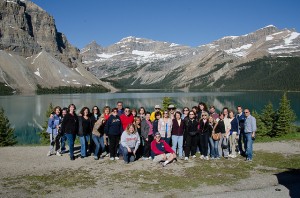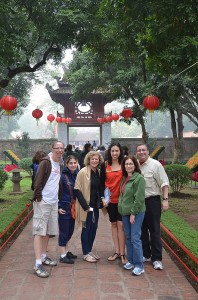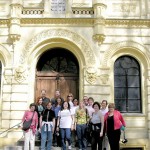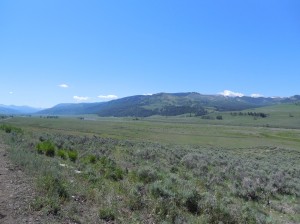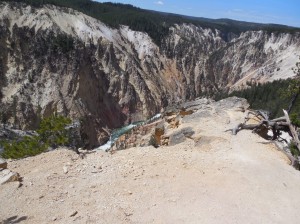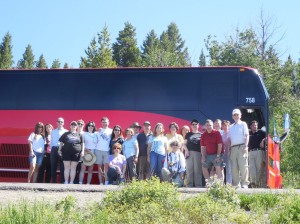-by Erin
For many travelers, anticipating a trip is almost as thrilling as actually taking it. Oh, the wonderful places you’ll see, the amazing memories you’ll create. In your mind, it’s all ahead of you; nothing will go wrong. Then why is it we almost always end up with that familiar pit in our stomach, those clenched teeth and voices raised in frustration at least once during our trips?
Vacation stress strikes for a variety of reasons, usually when we’re caught off guard in unfamiliar surroundings. While it can be difficult to avoid every situation that might cause anxiety, you can anticipate some common problems and give yourself relief from the worst of your hassles. Read on for solutions to stressful scenarios that could affect your next trip and know that by traveling with Amazing Journeys, we will be there to make the journey as care-free and relaxing as possible!
Overhead Bin Space
Source of Stress: I’m in the final boarding group. Will I find enough room in the overhead bin when I get on the plane?
Your Stress Reliever: In May 2013, American Airlines started a policy that allows passengers who gate-check their bags to move ahead of others in the boarding process. (It remains to be seen whether the policy takes hold industry-wide.) But no matter which airline you’re flying, it never hurts to ask the gate agent whether they will gate-check your bag. CBS News travel editor Peter Greenberg says, “The assumption is that the oversize compartments will always be full.” He notes that when that is the case, most airlines offer to gate-check your bags at no cost. You’ll often retrieve your bag on the gangway after your flight.
Be aware that even if you don’t plan to gate-check your bags, you may have to if you’re in a late boarding group. Airlines often will announce a full flight before boarding to let people know they will probably have to gate-check luggage. If you’re affected, make sure you move any crucial items from your carry-on to the personal item that you will bring onboard — such as medications, keys, tablets and other valuables — to safeguard against having them lost in a checked bag.
Another tip: When you get onboard and make your way to your seat, keep your eyes open for any open bin space you pass. You aren’t stuck using only the spaces near your seats. If you are among the last to get on, any open space will do, and if it’s toward the front of the plane, you can easily snag your bag as you file off. Carry on softer luggage — rather than hardside or roller bags — if possible, so you can squeeze your gear into tighter bin spaces.
Cab Rides in Unfamiliar Places
Source of Stress: How do I know this cab driver isn’t long-hauling me? I’m not familiar with this city, but the ride seems to be a lot longer than I anticipated.
Your Stress Reliever: Do a little research before your trip to get a basic knowledge of the main roadways and routes around the city you are visiting. Use the GPS on your smartphone to track the expected route. If you know you will be using a cab for specific trips during your stay (to your resort, then back to the airport), you can easily map it. Don’t be afraid to tell the driver you want the quickest route.
Airport Security
Source of Stress: I can breeze through the airport security process when I know what not to pack and have my documents ready to go. But sometimes, long lines (“Will I make my gate on time?”) and the screening process itself leave me totally frazzled.
Your Stress Reliever: The best way to alleviate the anxiety is to make sure you get to the airport with plenty of time to spare. Most major airports provide estimated screening wait times on their Web sites, and several apps provide the info too, including GateGuru and My TSA. A general rule is to make sure you get there at least 90 minutes before your flight is scheduled to depart. (Arrive even earlier for travel on busy holidays, and show up three hours ahead of your flight time for international trips.) If you end up with extra time, plan to get in some reading, Web surfing or noshing — all things that can help you relax as you prepare for your trip.
As for the security screening itself, keep in mind that you can request a pat-down instead of a full-body scan if you’re concerned about radiation from the machines — just leave yourself a little more time for manual screening.
Packing
Source of Stress: Making sure I have enough, but not too much, without forgetting anything.
Your Stress Reliever: Make a list. We’ve all overpacked at times, forgotten something essential at others. Learn from these errors. Brainstorm ahead of time and keep a tally of items you know you’ll need as the countdown to your trip begins. When it’s time to pack, take a good hard look at the list and assess whether you really need everything on it. (Gone for two weeks or more? Maybe it’s better to plan a laundry day while you’re away.) Then think about what you absolutely must bring (medication, toiletries, swim trunks, passports, other documents).
Look it over again before you zip up your bags. The key is to devise your best system. Once you find one that works — remember to save your list to use again and again! — you’ll maximize your packing efficiency and minimize your stress.
Getting Sick
Source of Stress: I seem to always get sick on my trips. I don’t want another ruined vacation.
Your Stress Reliever: Get plenty of rest, stay hydrated and keep clean. Airplanes, buses, trains and shuttles are packed with people all carrying their own germs and hygiene habits. Do your best to control your environment. Keep your hands clean and use antibacterial wipes on surfaces you’ll be touching on the plane. During your vacation, do your best to get enough rest and eat regularly. Sure, you’ll often be on a different schedule (maybe you want to enjoy an afternoon nap to ensure you can stay up late). You also will be enjoying more exotic foods — in perhaps larger quantities — but be wary of food preparation conditions to ensure they are safe.
Losing Photos
Source of Stress: Oh, no! I lost my camera/cell phone on the last day of vacation. I think I just lost about 1,000 photos!
Your Stress Reliever: Get super-organized with a good personal cloud storage or social media service, and upload your pictures at the end of each day of shooting on your trip. Make it a routine right before you tuck yourself in for the night to upload your snaps to a service such as Facebook, Instagram, Apple’s iCloud or Google Drive. Amazon also offers 5 GB of free cloud storage service. Not going to have Internet access during your trip? Stock up on smaller-capacity SD cards for your digital camera and use one for each day of your trip. Remove it each night and put in a new card for the next day. Store them separately from your camera.
Screaming Kids
Source of Stress: That child behind me on the plane/train/bus just won’t stop crying.
Your Stress Reliever: The sound of a screaming youngster — especially when it goes on for any length of time — can certainly lead to heightened stress levels for everyone within earshot (including the parents). Kids on planes usually will stop crying once the flight gets off the ground. How you deal with it depends on your personality, but consider that the child’s parents probably feel more stress than you in these circumstances. Maybe you’re an outgoing person. Sympathize with the parents and ask whether they need any help. Try to interact with the child to help calm him down. Not up for chatting? Carry noise-canceling headphones, an MP3 player or earplugs. Also, do a little deep breathing to relax while you think about your exciting travel adventures to come.
Getting Lost
Source of Stress: I always seem to go off course while driving or walking in a new city.
Your Stress Reliever: Stay calm. Locals — especially those in countries that thrive on tourism — are usually willing to help. Before you set out on your trip, make sure you know how to ask for your destination in the local language (if you are likely to encounter non-English speakers) or write it down on a card. That way people can at least read it and point you in the right direction. A good place to stop and ask for help is at a hotel, where staff are more likely to speak English.
Make sure your cell phone or GPS device has updated maps of your destination. Carry along a guidebook or map of the city. (These often are available at hotels.) If all else fails, embrace being lost for a little while. As long as you aren’t facing any danger and aren’t pressed for time, this is a chance to get in some impromptu sightseeing.
Original source: IndependentTraveler.com
 -by Erin
-by Erin




